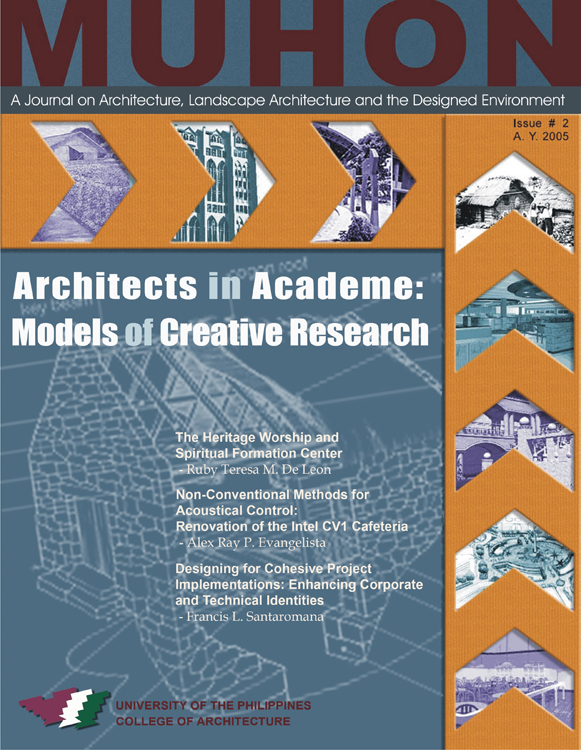Non-conventional Methods for Acoustical Control: Renovation of the Intel CV1 Cafeteria
Abstract
In modern urban life noise is an ever increasing problem. Escalating noise levels and noise intensities in all types of environments have proven to be disruptive to efficiency and productivity, and psychologically and physically harmful to the body. Noise can also be downright annoying, and can interfere with any activity, especially rest and relaxation. Thus, noise should be controlled not only in spaces where sound is an essential component, like recording studios or theaters, but also in places meant for relaxation, like private homes, restaurants, and even cafeterias.Although in designing large office buildings, the architect usually considers noise control and good overall acoustics for the conference and seminar rooms, the library, or even the work areas, little attention is given to non-work oriented spaces like the cafeteria. Without the proper acoustical attention, these spaces can cause discomfort and can deprive their users of the rest their minds and bodies need in between work hours.
Because good acoustical conditions are often disregarded at the onset of design stages, acoustical improvements are only considered after the problem has been actually realized and experienced. At this point, standard measures to solve the problems of noise are sometimes difficult to implement, for one reason or another.
It is not unusual for large spaces like a cafeteria to have parallel walls and floors, a low floor to ceiling height, and very little surface absorption. These physical characteristics guarantee that sound and noise in this space will endure a lengthy reverberation time. Additionally, if the space is constantly full of activity, the problem of noise levels and intensities increases.
Initially then, the designer tasked to solve these problems would probably look into the possibilities of reducing the floor area, increasing floor to ceiling heights, and simply replacing surface materials with highly sound absorptive alternatives. Though theoretically these measures would work, in reality these are usually easier said than done. Ceiling heights may be fixed permanently; enclosing surfaces like walls and ceilings may not provide enough absorption, even if replaced with very absorptive material; and restrictions related to the type of space might disallow the application of conventional acoustical treatment. Thus, there would be only minor changes to the reverberation time, and consequently insignificant improvements to noise control.However, non-conventional methods to reduce sound levels and ultimately improve the acoustical conditions can be introduced. Such methods can include providing openings through dropped ceilings, directing sound to absorptive surfaces, and providing additional absorption through “space absorbers,” absorptive furniture, and partitions.
This paper will present a case study of how these methods were introduced in the new design of the Intel CV1 Cafeteria. Other possible methods, whether utilized or not, will also be introduced. As a conclusion this paper will project how acoustical conditions in this, and other similar spaces, will be improved.
The copyright for the published work belongs to UPCA and its selected publisher. The contributor is free to publish a modified version of the same article in other publications.
The contributor guarantees that :
- the article does not infringe on the copyright or any proprietary right of any other person
- the article contains no libelous or other unlawful matter
- the article makes no improper invasion of the privacy of any other person.





